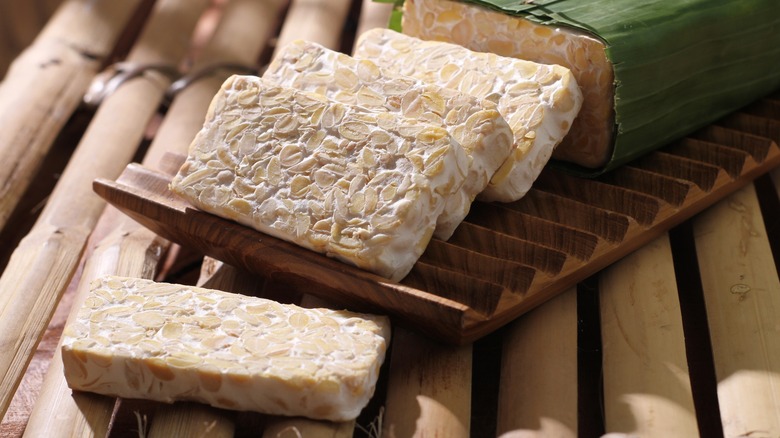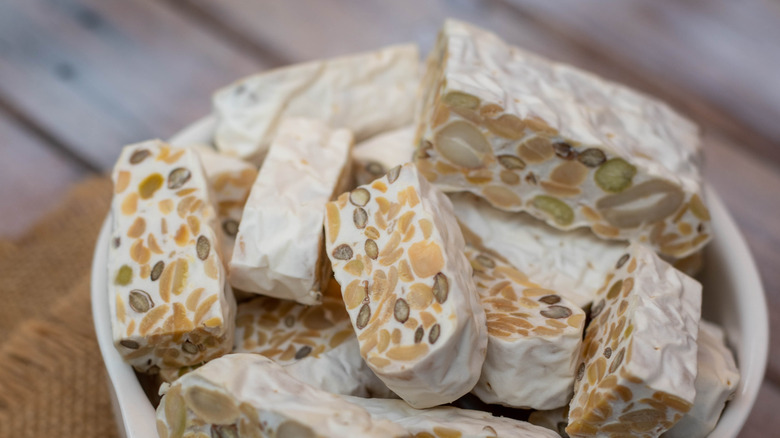The Only Guide You'll Ever Need For Buying Tempeh
Tempeh is a plant-based food made from cooked and fermented soybeans. While the spongy-looking ingredient may have once been more well-known in specific foodie communities and tucked away next to containers of tofu at co-ops and health food stores, larger chains are now stocking the product, and tempeh can be more easily found in refrigerated aisles alongside other plant-based meat alternatives. Without needing to travel to Indonesia or search for the product online, you can find both original tempeh recipes and variations on the traditional soybean-based product, with tempeh chunks enhanced with additional fermented beans, grains, seeds, and coconut.
After you have stocked your fridge with protein-packed tempeh, you can slice pieces and grill them to golden, crispy perfection to add to sandwiches, dice cubes to toss into tonight's curry, or even grind up the ingredient to mix into a marinara pasta sauce to create a satisfying meal.
Varieties of tempeh
While shopping for tempeh, know that there is more than one kind of product available. Tempeh can be made and sold with the addition of extra grains, flaxseeds, or hemp seeds added to the traditional fermented soybean mixture. You can also find varieties made from coconut pulp, tofu pulp, jack beans, velvet beans, green beans, and cowpeas. Depending on the ingredients used to make it, the appearance of the surface will vary in color and texture. Some varieties are softer in texture, like one type made with jack beans. This tempeh takes several days to make, as the beans must be soaked for two days before they can be mixed with yeast and turned into tempeh. It can also be packaged in premade strips or in flavored marinades so that the at-home chef can quickly add the ingredient to meals.
Keep the recipes you have in mind as you browse store shelves, and look at product labels to help you match flavors for the dishes you intend to cook. You'll notice a variety of brand labels on the products, ranging from Franklin Farms, Tofurky, and Lightlife to smaller, local, and independent businesses.
Storing tempeh
Should you find yourself in Indonesia, there's a good chance you'd come across tempeh sold in leaves or newspapers. When choosing tempeh to buy at your grocery store, however, the products are most likely packaged in plastic. Look for tempeh made from non-GMO soybeans and opt for products made with sustainability in mind. It should not have any noticeable mold or alarming discolorations. This is a product with active bacteria that requires cold temperatures to store, and you want to buy an ingredient that will keep once you get home.
Because tempeh continues to ferment, storing the pieces in air-tight containers is important to keep the product as cool and dry as possible. It can last up to three weeks in a refrigerator, and unopened tempeh blocks can be placed in the freezer for up to a month. Slimy tempeh or chunks that have an off-putting smell should be discarded. Before using the ingredient, cut pieces to look for colored or odorous areas of mold.
To extend the lifespan of your tempeh, slice and dry the product. Then, when you're ready to drop it into soups or sauces, use the pieces just as you would dried meat. Boil or fry the tempeh, marinate overnight to bake the next day, or baste with soy sauce to create a delicious dinner with ease.


